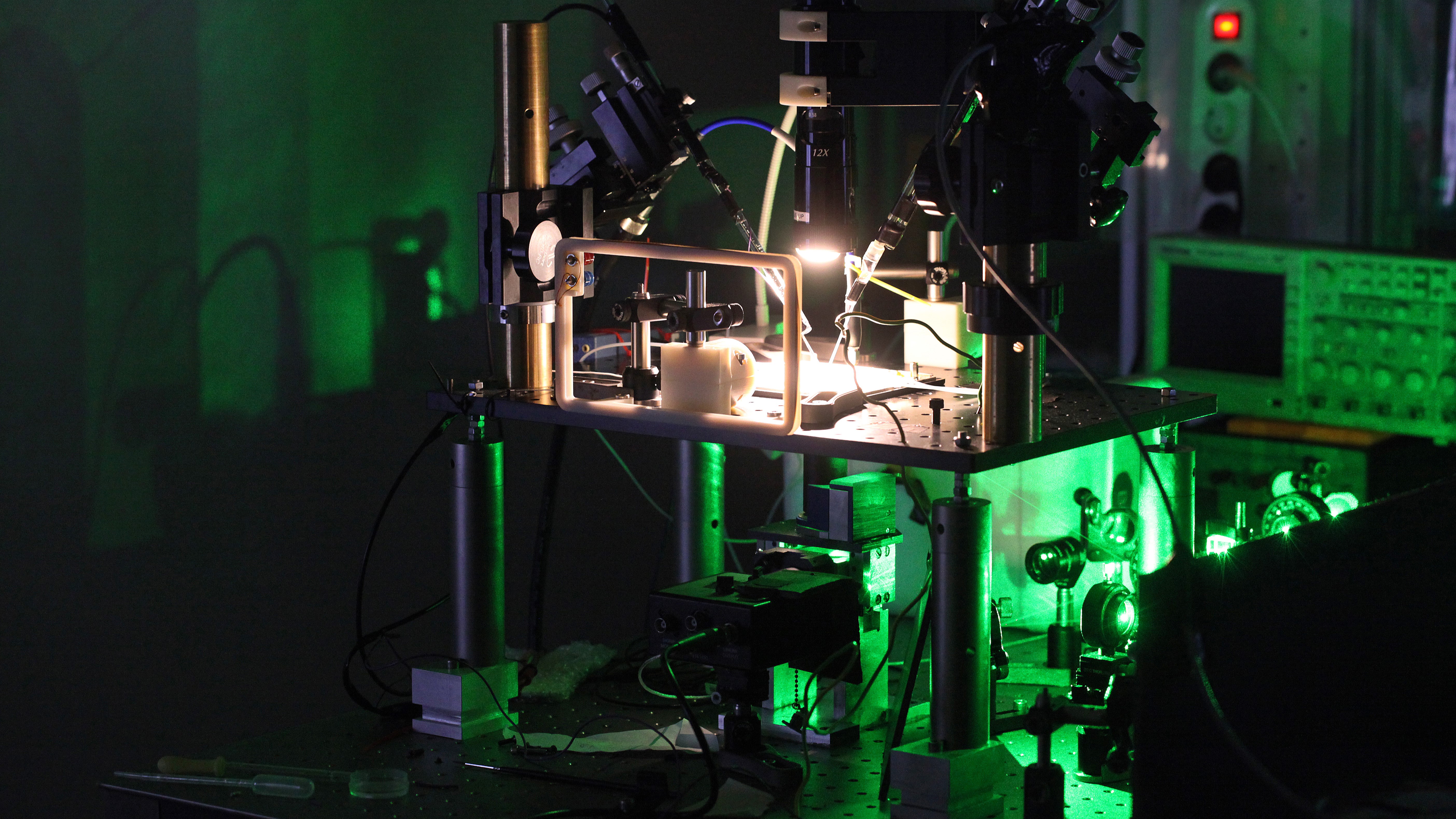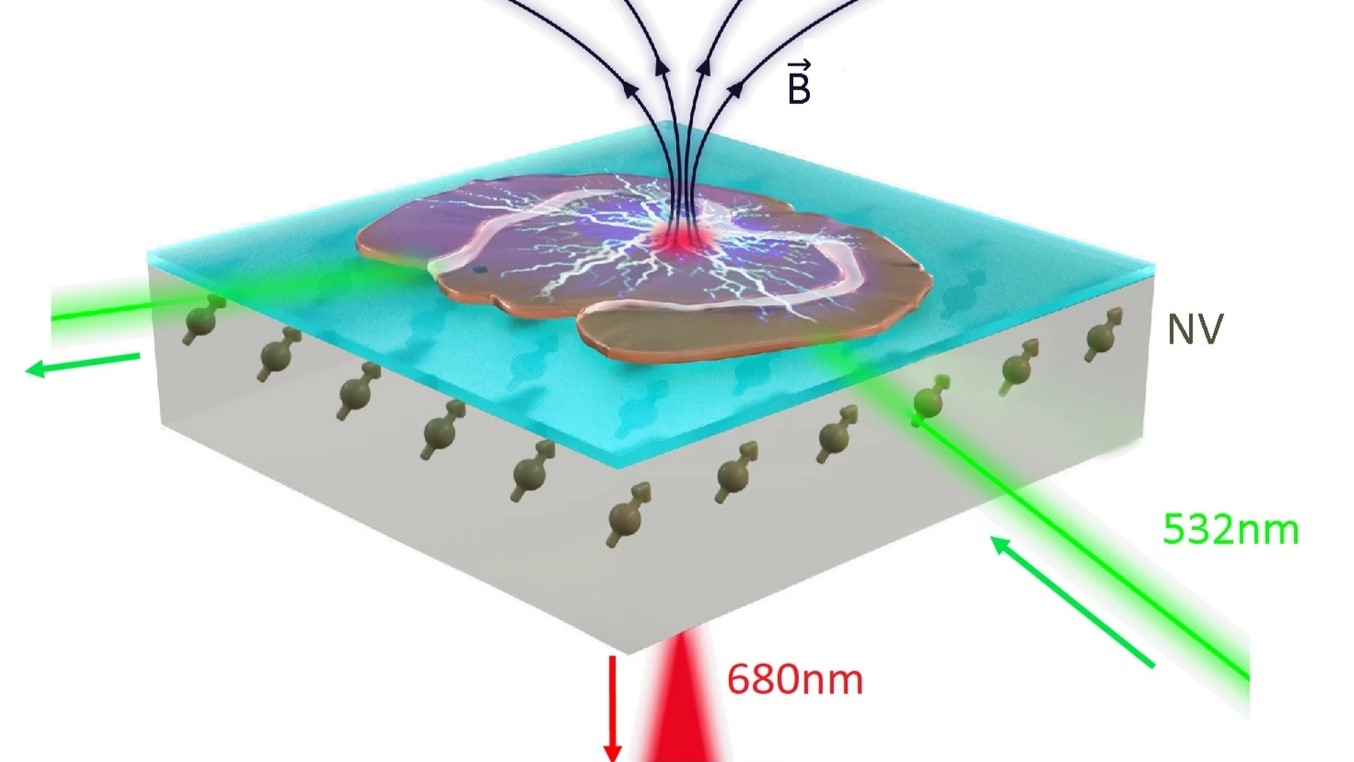Before people encounter symptoms of brain diseases such as dementia, slight changes have usually occurred already in the brain tissue. It may be that parts of the brain are swelling up or clumps of proteins are forming. These small changes might influence how nerve cells in the brain signal each other and communicate, how information is processed and memorized.
Medical scientists want to study these minor changes that occur in the very early stages of a disease. That way, the intention is to learn more about the causes of the disease to provide new insights and more efficient treatments. Today, microscopic studies on the brain are performed with one of two strategies: Optical inspection of brain tissue samples from animals or deceased patients that suffer from the studied disease or measurements of the signals from the nerve cells using wires, colouring, or light.
These methods, however, have some limitations: They may damage the tissue or change the signals. Also, they may work differently depending on what tissue you are studying; signals from some parts of the nerve cells involved in a particular disease may be hard to measure.
Measuring the field, not the sample
Scientists from DTU, the University of Copenhagen, Copenhagen University Hospital, Université Sorbonne, and Leipzig University have found a way to measure the signals from brain tissue without touching or inserting needle probes into it. They do so by measuring weak magnetic fields produced by the nerve cells when communicating. In doing so, they made use of the fact that the magnetic field travels through the tissue unchanged.
"Overall, the idea is that sensing the magnetic field ultimately is non-invasive. You do not need to insert electrodes or probes or stain the tissue you want to analyze. Because one picks up the induced magnetic field, one obtains information about the activity without inserting a physical sensor into the system or otherwise modifying it," says Alexander Huck, Associate Professor at DTU Physics who was supervising the project and is co-author of the study.
It is nothing fundamentally new to measure magnetic fields induced in the human body, but it usually requires special equipment that is bulky and needs cryogenic cooling. As such, traditional methods are not suitable for measuring small, living tissue samples, let alone tissue from the human brain.
In this project, the team of scientists is taking advantage of tiny, deliberate flaws in synthetic diamond crystals. These flaws are called colour centres or, technically, nitrogen-vacancy centres/NV centres. The term NV-centres derives from the fact that in the diamond, one carbon atom is replaced with a nitrogen atom and sits next to a vacancy, i.e., where no atom is present. This causes the centres to allow light absorption and – upon releasing energy - light emission.
"These NV colour centres also have an effective unpaired electron with a spin, and if there is a magnetic field, the spin of the electron oscillates around that field. So, if the magnetic field increases or decreases, it will oscillate a bit faster or a bit slower, and we can measure these changes via the light emission of the NV colour centres," explains Alexander Huck.
Still at an early stage
The experimental setup is as following: In a centimeter scale chamber, a slice of brain tissue is placed on insulating layers of aluminium foil. The diamond is set in a hole at the bottom of the chamber, below the insulating layers. A green laser and a microwave antenna are then aimed at the colour centre of the diamond, and the light emission from the diamond is recorded. When the scientists stimulate the neurons in the tissue to fire simultaneously, they can measure changes in the brightness of light emission from the colour centres.

